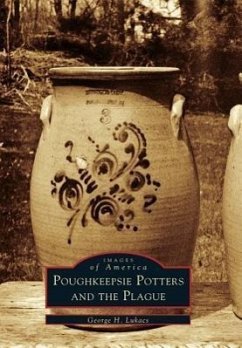Folk art has long been a part of the cultural heritage of the Hudson River Valley. The Hudson River school of painting traces its roots to the valley, as does a unique decorative style of stoneware--preserve pots and jugs with scenes of birds, flowers, and animals that were part of the potter's life. While the Hudson River paintings, usually commissioned by wealthy landowners, have achieved universal acclaim, the utilitarian stoneware, owned by even the least successful merchants and farmers, has been widely collected but little understood. Poughkeepsie Potters and the Plague makes an important contribution toward an understanding of the stoneware tradition of the Hudson Valley. Based on years of research, it uncovers for the first time the significance of early stoneware production at Poughkeepsie and outlines its one-hundred-year history. Astonishingly, its early beginnings may be attributed to a series of yellow-fever epidemics that struck New York City during the 1795-1805 period. These epidemics forced a migration of people away from the beleaguered city to places such as Poughkeepsie. Poughkeepsie Potters and the Plague began with a dated butter pot that was made by the first stoneware potters of Poughkeepsie as a tribute to the epidemic victims of New York City in 1798--a single piece of pottery transcending time and location to bring to life the historical triumph of the enduring human spirit.
Hinweis: Dieser Artikel kann nur an eine deutsche Lieferadresse ausgeliefert werden.
Hinweis: Dieser Artikel kann nur an eine deutsche Lieferadresse ausgeliefert werden.








